Chapter I: Born to Darkness - The genesis of the Devil

Note: For those who believe that all I do for these journals is cannibalise and transcribe pages from Wikipedia, let me set you straight by saying yes, yes I do, but that’s not all. I always try to use as many sources as I can to back the research I do on Wiki, and I never copy anything verbatim, except in a few isolated cases where I use quotes, and they’re always attributed.
For this journal I’m referring to the following works:
The Birth of Satan: Tracing the Devil’s Biblical Roots by T.J. Wray and Gregory Mobley (Palgrave MacMillan, 2005)
The Prince of Darkness: The Devil in History, Religion and the Human Psyche by Joan O’Grady (Element Books, 1989)
The History of the Devil and the Idea of Evil by Paul Carus (Open Court Paperback, 1991 - written approx 890)
And possibly
The History of the Devil by Anonymous (1727)
It’s from the first book that I approach the question, which I’ll be dealing with in considerably more depth a little later, why do we need the Devil? Wray and Mobley posit the answer by looking back even further than the Bible, or any written record, to the dark unknown that lurked outside the cave homes of our ancestors, by the wild cries in the night that presaged danger, and even the voice of the wind or the crack of the thunder which would have unnerved and spooked our forefathers, as, to be fair, it can still do to each of us when the circumstances are right. The question morphs slightly, from “why do we need the Devil?” into “why do we want or need to be afraid?”
Taken in its simplest form, the answer should be, we don’t, but that’s not the case. How many horror movies have you watched, scared but unable to resist? How many times have you crossed the road against traffic, broken a red light or walked down a deserted alley in the darkness? Or to put it on an even simpler and more mundane level, how many rollercoasters have you ridden, how many motorcycles, how many mountains have you climbed and how many times have you sought out danger, excitement, adventure? This triplet, perhaps its own (un)holy trinity in ways, is inextricably linked with fear. You can’t really be excited without a certain amount or type of fear attendant, even if it’s only the fear that this may end too soon. Danger goes hand-in-hand with fear of course and adventure? Well, that’s kind of nothing without a healthy dose of fear, is it?

So not only do we need fear, we seek it out. It might be a little condescending to say boys look for fear more than girls do, and in this I mean young kids, but it is true. While the girls are playing shop or skipping or dolls tea party, the boys are scuffling, kicking, punching each other and taking forbidden paths into forests and the ruins of old houses and to the lips of quarries, and any other place they’re told not to go. Dangerous people - the woman rumoured to be a witch, who captures children and eats them, the strange, bespectacled man who keeps stuffed carcases of animals in his house, the guy rumoured to be a gang boss - attract us, and stories of houses said to be haunted, graveyards, marshes and moors all have an irresistible pull on our imagination at that age, and though we fear them, we fear perhaps more the disdain of our companions if we avoid them, the accusation of being a coward.
So humanity as a whole likes to be scared, and to scare, and that in itself is no terrible harm. Fright gets the adrenaline going, can spur you to get the hell out of a dangerous situation, can warn you when danger is near. It can also be a powerful adversary; have you ever crossed the road and suddenly found a car bearing down on you? What do you do? You should keep going, run, but inevitably you stop, frozen in your tracks. Frozen by fear, which has fused your muscles and stiffened your limbs, and dulled your brain so that the urgent signals to MOVE can’t get through, and you stand rooted to the spot.
But fear can be used too, of course, as a weapon. It doesn’t take a genius to see that World War II would never have happened without the addition of fear in the equation; indeed, most wars are driven by fear, whether real fear that your homeland is under threat, or projected fear used by the ones who want to wage war, want to send you to war; the fear that may or may not be manufactured, a total lie, or may have a grain of truth supporting it, but which will give you the impetus to accede to the wishes of the warmongers, and go to, or support, a war which in all probability you know little or nothing about.

Which makes fear a tool for control, perhaps the ultimate tool, and when you want to ensure that people stay on the straight and narrow, to quote Iron Maiden, fear is the key. The key to control. The key to power. The key to obedience. The key, almost, to the very human heart itself. Frighten people enough and they will do what you want. Keep them in a constant state of fear, threaten them incessantly, roar it from the pulpits, write about it, warn about it, create verbal vistas of horror to show people how terrible the consequences of disobedience can be, and you have yourself all but a slave populace. Ally that to religion, to faith, to dogma, and you have the beginnings of the need for the Devil.
As a child, you were warned about everything that was bad or dangerous, but simply being told was not enough: there had to be some reason why you should not do or say this thing, something undesirable that would definitely happen to you. Some, most in fact, was and is harmless, mostly superstition or completely made up. Make a face, and your mother would tell you if the wind changed you’d remain that way forever. Be good and Santa Claus would bring you toys. And some are practical and rooted very much in reality: don’t stick your head out the window when travelling on a train, as another one coming the opposite way could knock it off. Don’t touch the fire, even if it looks pretty, as it will burn you. Don’t talk to strangers, they’re just waiting to take you away. And as we get older, don’t stay out all night, don’t go with strange boys, don’t smoke, and so on.

One of the oldest and most effective (when we’re very young) warnings is the bogeyman. Do this (or don’t do this) or that and he’ll get you. The bogeyman is an amorphous, ill-defined creature of the night, emerging from places unknown to capture bad boys and girls and drag them to, well, places unknown. Stupid really, and hardly well thought-out, but when we’re very young it works. We really do believe in the bogeyman. The innate and ingrained mistrust of strangers allows us to see every stranger, no matter how harmless, as the bogeyman or one of his many deputies. To calm a crying child on the bus, a mother only has to point to any man - driver, conductor, other passenger, that guy with the hood and the scythe who’s already gone past his stop - and say “here’s the man!” for the child to decide to shut up. A dark dread of “the man” is enough to instil fear and often immediate compliance, lest these shadowy figures we have been warned about, threatened with, make good on their evil promise.
So the Church needed its own bogeyman, because people don’t just behave because you tell them or ask them to. The eternal question “What if I don’t?” must be answered with a dark and forbidding alternative, to make compliance infinitely preferable to disobedience. The bogeyman is quickly supplanted by the Devil in our young lives. Naive as we are as children, we soon outgrow the notion that there is a faceless figure slouching around the world, hiding in closets in bedrooms and under beds and up chimneys and on roofs, waiting to spirit us away. We lose our fear of him primarily because, somewhat like Santa, at a certain point not only does our own developing intelligence inform us such a being could not exist, but our parents admit to the scam: it’s all been made up. There is no such thing as the bogeyman.
But the Devil? Well now, that is another kettle of herring entirely. If the family is a devout Abrahamic one, they either believe in the Devil or if not, know enough to realise that he is a very good substitute for, even progression from and successor to the now-discredited bogeyman. And the thing about him is, he exists! Well, he must, mustn’t he? The priest says so, the Pope says so, your parents say so, your school teachers (probably) say so. It’s a little hard to discount or discredit a figure so many adults seem to believe in, not so easy to relegate the Devil to the position of fantasy and fairy tale. Depending on how strong faith, belief or naivete in the family is in religion, you might end up believing the Devil is real, walking this world, all around you, just waiting, like that discredited bogeyman figure, for you to slip up and commit sin so that he can drag you screaming down to Hell.

Just as a way of illustrating how powerful the image of the Devil can be, here I present, verbatim and taken from their book
The Birth of Satan: Tracing the Devil’s Biblical Roots, the childhood experiences of both the authors. While of course each of these can be put down to an overactive imagination, too much indoctrination both in school and church, and the somewhat naive view of youth that there are in fact monsters living under the bed, they do serve to show how effective the mere idea of a dark demon waiting just out of sight to catch those who sin can be on young minds, and how those “experiences” can be carried through to adult life, often altering the person’s worldview entirely.
Wray recalls:
I had actually seen the Devil a few times. Once, just moments after teasing my little sister until she cried, I saw his shadow pass from behind the laundry room door in our basement into the family room. I remember bolting up the stairs and slamming the cellar door, terrified and breathless. “What on earth is wrong with you?” my mother asked. “I saw a spider,” I lied, adding yet another bead to the necklace of naughtiness I had been fashioning for myself for years.
On more than one occasion I had seen Satan scurrying through the thin trees beyond our back fence. I was convinced he was spying on me as I sloppily raked leaves or deposited the trash in the rubbish bin, leaving the lid off out of pure laziness. Indeed, there were days when I was too terrified to venture into my own backyard for fear that the Devil and his minions were lying in wait for me, eager to include yet another bad little girl to their fold. But perhaps my scariest “Satan sighting” of all happened at one of the most unlikely places of all—church.
One Friday afternoon during Lent, as I exited St. Frances de Chantel Holy Roman Catholic Church after my weekly confession, I was sure I saw him lurking just outside the heavy glass doors of our church. Father Anthony had prodded me to search my tenyear-old conscience for graver sins than swearing and punching my sisters. “Honest, Father,” I had stonewalled, “I haven’t done anything else that I can think of.” I neglected to tell him, of course, that I often skipped Mass, regularly ate meat on Fridays (even during Lent), frequently took the Lord’s name in vain, and, oh yes, lied to priests. As I rushed down the church steps that afternoon, skipping out halfway through my ponderous penance, I was certain the Devil was hot on my heels. Hunched in the back of my parents’ old Plymouth station wagon, I fended off terrifying images of Satan’s bony red fingers clutching my ankles and dragging me into his fiery pit. At the ripe old age of ten I was convinced that, as in Dante’s famous inscription, I should abandon all hope. “I’m going to hell,” I thought miserably.
Satan also appeared in my dreams occasionally—his face red, his teeth pointy and yellowed, sneering and breathing long streams of gray smoke through hideously engorged nostrils. He had a twisted horn on either side of his head and a scruffy-looking black goatee. Most frightening of all, he carried a pitchfork, his personal instrument of terror, used to spear bad children like shrimp on a cocktail fork. Petrified for weeks after one of these Satan sightings, I learned to never, ever sleep with my back to the bedroom door for fear that the Devil might catch me unawares.
Mobley also has his story:
In my nightmare, the most vivid dream of my life, I was watching television with my feet dangling over the edge of the living room couch. The Devil grabbed my feet and began pulling me into the chasm between the department store sofa and the bare wood floor. I could not get any purchase on the slick vinyl and was descending, kicking and screaming, into hell. I could see my savior, my paternal grandmother, in the adjacent kitchen, but even she, the adult in my world most powerful in love, seemed blind and dumb to my plight. I must have been about seven or eight. For the rest of my childhood, I crouched on top of that couch, legs bent at the knees, a clenched-up ball of vigilance against the Adversary, who as a roaring lion prowled about suburban domestic crawl spaces, seeking whom he may devour.
From the very first recorded stories written or even told by humans, the idea has been that there are two great opposing forces controlling, or vying for control of, man’s destiny, his heart and his soul. One is generally considered to be Good, Light, Order - it goes under many names - the other Evil, Darkness, Chaos and so on. Because our ancestors were so convinced that higher beings had charge of their lives, most likely because we were unwilling or unable to take responsibility for our own failings, and refused to accept the basic lack of fairness in the world we saw around us, and there was so much we were not equipped to make sense of or understand, both these forces had to have, if you will, generals; beings that marshalled the forces of either Good or Evil and directed and regulated our lives in the direction that suited them.
This didn’t mean that “Good” gods always did “good” things. They could be as capricious and as unfeeling and heartless as the blackest demon. But the belief was that if you kept the gods on-side, as it were - performed your sacrifices, said your prayers, attended church/temple, led a good life and didn’t anger them - then you would probably be all right. To our forefathers, the only people the gods punished were people who deserved it, who had displeased them in some way. But overall, the gods were good as long as you didn’t piss them off. As for the embodiment of evil, well, now that was a totally different matter.
You see, the gods were generally, as has been outlined above, gods of order, gods of fruitful women and plentiful harvests (or is that the other way around?) and wanted to be good to us. They were seen as our parents, high in the sky, looking down on us - hopefully in approval - and watching over us, guiding our steps and keeping us on the right path. Of course, we were their children and so when he stepped out of line we had to be punished, but our ancestors accepted this and knew it was necessary. The dark one, though, wasn’t at all interested in that. He, in fact (almost always personified as a male, which is no surprise as few of the pantheons, as I mentioned in my Of Gods and Men journal, had many goddesses who actually did anything or had much power, with a few exceptions) wanted us to be bad. He was the natural enemy of the gods, the wreaker of chaos on order, the reaver, the destroyer, the angry and petulant one who would destroy us just for the fun. We needed to keep well away from him.

But he was a god, of sorts, too, and we were mere mortals, so we needed protection from him. That protection came, of course, from the gods, and we sacrificed and prayed and led good lives and honoured and revered them in the hope they would keep us safe from evil. It’s even in one of our own Christian prayers, an actual plea to keep us safe from dark forces. That doesn’t come for free though, and like the gangsters walking into shops and clubs and “accidentally” knocking something over or setting something on fire, that shield would only be deployed in return for payment, in the case of the Christian God, blind and unswerving faith and obedience. In earlier times, it might be a blood, even a human sacrifice, the building of a statue or temple, the naming of a child, the undertaking of a pilgrimage or a hundred other concessions to the celestial Mafia.
The major problem here was that the Devil, like the gods, were pure inventions pulled out of man’s own head, and in reality there was no way to protect yourself from the Devil, because he was inside you. When it gets right down to it, the Devil is nothing more than the physical manifestation of the fears, doubts, passions and indeed the violence and evil inside us all, and nobody can protect you from yourself. That old excuse - the Devil made me do it - it don’t wash, son. It don’t wash. It’s just humanity again abrogating responsibility for the things it has done with which it can’t reconcile itself.
But none of that really concerns us. For the purposes of this journal, and entertainment, we’re going to assume the Devil is real. Not real real, but an actual presence, a being, a god. If we accept the existence of other gods, then it’s not too hard to envisage a dark one working against them, and when we look around and see the state of the world now - a state that has progressively worsened over time but which was, in truth, never that great (no “golden age” for humanity, no matter what people thought at the time, has ever existed, and probably never will) - it’s not hard to believe that the evil we see is controlled, orchestrated and driven by forces beyond our ken.
It’s not. It’s just us. But again, away with such details.
So to return to our original premise, if there were two great forces (for the sake of simplicity -and it is simplistic but never mind - let’s refer to them from now on as Good and Evil) fighting over our souls, then there had to be two great powers driving them. And on the side of evil, its commander, president, general, dictator, call it what you will, was the Devil.
Another reason why the Devil, or his agency, evil, came into being as it were has to do with the belief that god(s) is/are good, and that everything he/they make should by default be good too, but we found and continue to find this is not the case. How many times have you heard someone say (or said yourself) “How can God allow this to happen?” Answer: he doesn’t. He is being thwarted by the Devil, who is out to destroy and warp and corrupt his creation. Much easier to come to that conclusion than accept that we flawed human beings are not worthy (if a god exists who created us) of the wonderful things we have been given, and that we destroy everything we touch. It’s not our fault. Oh no. It’s him. The Devil. He’s the one. He’s evil, he is.












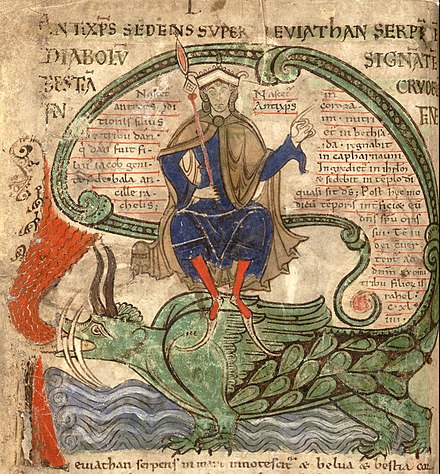











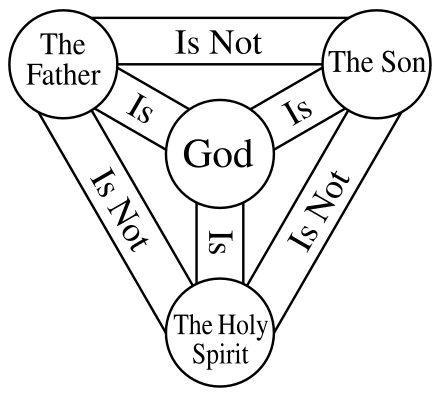



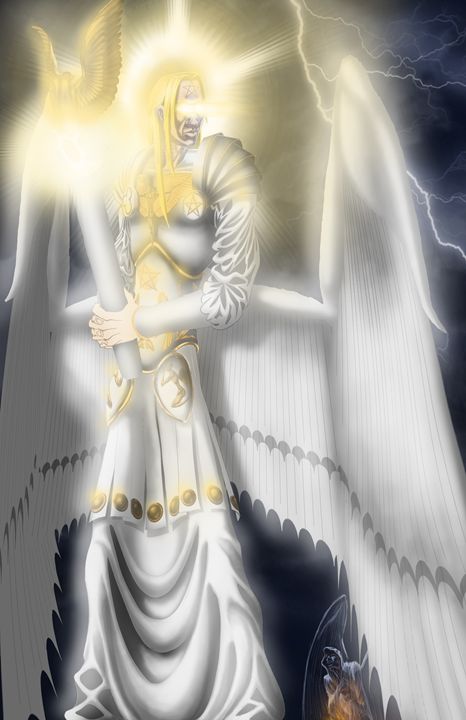



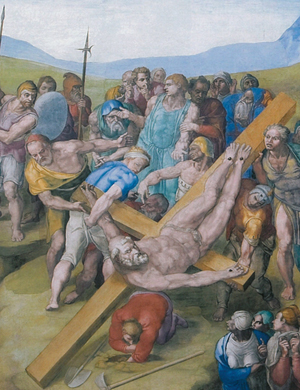





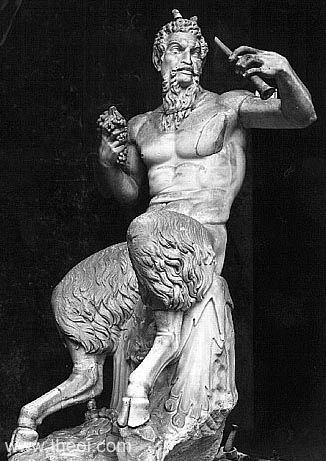


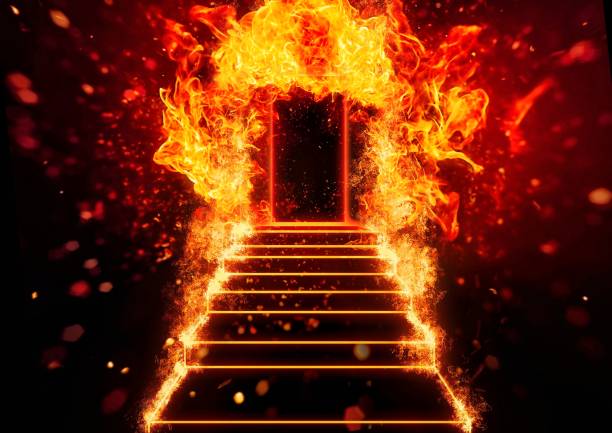

 Linear Mode
Linear Mode
